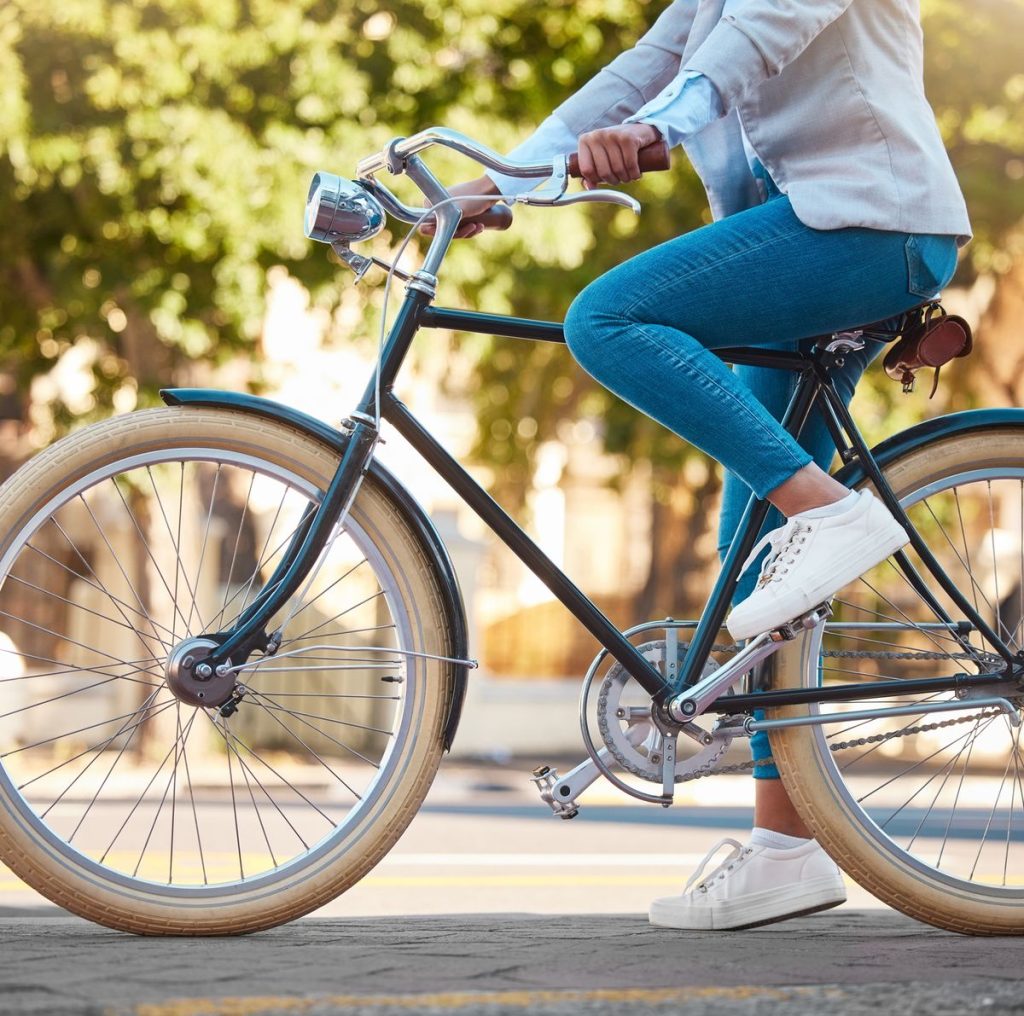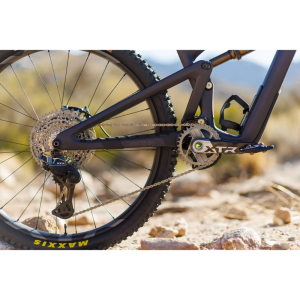Learning how to ride a bike isn’t just for kids so if you’ve been contemplating pedaling as an adult—there’s no better time to try than today! You’re bound to have fun once you learn, and beyond that, riding a bike is a great way to stay active and improve your overall health. Trust us, you’ll love the feeling of the wind blowing through your hair and the freedom of cruising around on two wheels.
With Bicycling’s step-by-step approach, learning how to ride a bike as an adult is not any harder than it is for kids. Just make sure to push those grown-up nerves aside!
All you need is a bike, a helmet, and a safe wide-open space, like an empty parking lot or a park, to get started. Then follow the steps below.
6 Steps for Learning How to Ride a Bike
1. Find the proper fit
First, make sure you can stand over your bike without the top tube pressing into you. (If you can’t, you may need a smaller size. A professional bike fit is important and super helpful, if you can get one done.)
Then lower the seat, so your feet can touch the ground—this is helpful for a new rider. You should be able to reach the handlebars and brakes comfortably.
If you’re not sure where to start on choosing a bike, we’ve got a list of the best beginner bikes to choose from.
2. Practice hopping on and off
To mount the bike, lean it toward you (to the side) while applying the brakes so it doesn’t roll or wobble. Apply the brakes again when getting off the bike.
3. Get comfortable with braking
Braking is a crucial skill that Marilyn Northcotte, a former instructor at Pedal Ready in Wellington, New Zealand, says will give you a lot of confidence starting out. Walk next to your bike and push it down the street while practicing pulling on the brakes to stop. Make sure you apply pressure evenly on both brakes.
4. Learn to glide
Now you’re ready to start moving. Practice the basic “balance method,” which involves scooting on the bike with your feet, says Northcotte.
“Scooting along helps you to learn the feeling of balancing on two wheels,” she says. “The aim is to push off and get both feet off the ground for as long as you can. If you need to put one foot down to correct the balance, then put both down and start again. Once you can glide along without touching your feet down to correct yourself, then you’re ready to begin pedaling.” Practice your glide until you can keep your feet up for three seconds.
5. Maintain your balance and line of vision
“Anything that involves balance is helpful and can be used as a point of reference,” Northcotte says. “For example, if you’ve ridden a scooter before with both feet on the platform, you should be able to balance on two wheels.”
Look toward where you want to go, instead of focusing on obstacles to avoid. Keep your eyes up and always look ahead instead of down. This will help you maintain balance and follow your line of vision.
6. Start pedal practice
Once you can maintain balance while gliding and have mastered braking and keeping your vision steady, you’re ready to pedal. Start with one foot on the ground and the opposite foot on a pedal in the two o’clock position to give you some momentum when you push off.
Then push down on the pedal and add your other foot as you move forward. You’ll notice the faster you pedal, the easier it is to maintain your balance. Practice pedaling circles around the park or parking lot.
Once you develop confidence, get off the bike and move your seat up so that your feet reach the pedals with a slight bend. Practice navigating cones or obstacles until you get the hang of it. And just like that, you’re riding a bike!





